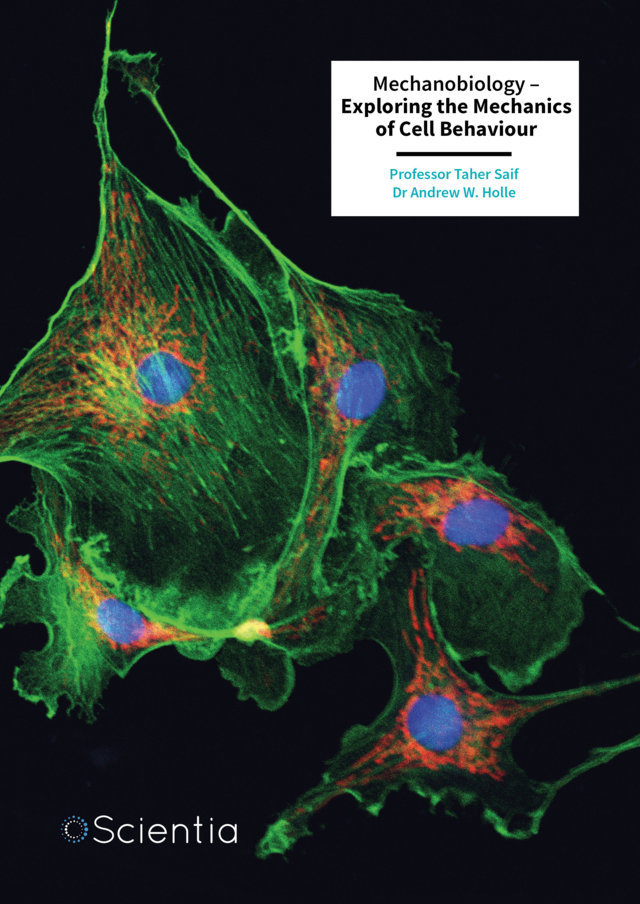The Arctic’s climate is changing faster than almost anywhere else on Earth, but climate scientists are still uncertain how it is being affected by carbon-rich aerosols, released by fires thousands of kilometres to the south. Through their research, a team led by Dr Yvette Gramlich at Stockholm University in Sweden and the Paul Scherrer Institute in Switzerland has gained deeper insights into how these aerosols are impacting Earth’s northernmost reaches. Their work could help climate scientists to better predict how the Arctic’s climate will change in the future. More
The expression “aerosol” describes the suspension of particles in a gas. Aerosol particles are a broad family of tiny solid and liquid particles, light enough to float freely in the air. Originating from a diverse range of natural or manmade sources, they can have a significant impact on Earth’s climate.
One group of aerosols which have a particularly strong impact are the carbon-based particles released by the burning of organic material, such as plants. Collectively termed ‘biomass burning’ aerosols, these particles are a large source of pollution. Over the past few years, their impact has steadily increased as climate change has increased both the frequency and severity of wildfires across the globe.
Nowhere has this change been felt more strongly than in the Arctic. Although the Earth’s northernmost reaches contain very little forest or farmland of their own, they are still regularly impacted by smoke from fires in the mid-latitudes: which span large swathes of Europe, Asia, and North America in the northern hemisphere.
Transported thousands of kilometres northwards, carbon-based aerosols from these fires can fundamentally alter the chemical makeup of the Arctic air. For instance, since these particles also contain soot, which is very dark, they can absorb the sun’s heat more easily, and in turn have a warming impact on the atmosphere.
However, while climate scientists are certain these changes are happening, the sheer remoteness of the Arctic has so far limited their ability to measure them. Because of this, researchers still don’t understand the full impact of biomass burning on the region’s atmosphere.
Through their research, Yvette Gramlich and her colleagues discovered that aerosols from farm and forest fires in Earth’s mid-latitudes are indeed impacting cloud formation ability in the Arctic, but they also found that the impact of these events isn’t felt uniformly throughout the year. Instead, the particles tend to arrive from the mid-latitudes in large bursts, and their chemical and physical properties tend to vary throughout the year.
To investigate the impact of biomass burning in the Arctic, the team carried out a year-long study at the Zeppelin Observatory on the Norwegian archipelago of Svalbard – one of the most northerly land areas on Earth. Throughout 2020, they took regular air samples at the observatory, by collecting aerosol particles on a filter, and analysing their chemical composition, using the technique of ‘chemical ionisation mass spectrometry’.
In this technique, the aerosol particles are released from the filter in form of molecules by using a heated airflow. These released molecules are then given a charge, which helps them to be guided through the instrument. Based on the different sizes and weights these charged molecules have they need different times to travel through the instrument, which allows researchers to accurately identify the molecules in their samples, and how much of each type is present. In addition, they used a model called HYSPLIT to estimate the origin and pathway of the air they measured on Svalbard.
From their observations, Gramlich’s team identified seven biomass burning events throughout 2020, all of which caused a sudden increase in the number and mass of the particles in the Arctic air. One of these events even triggered a tenfold spike in particle concentrations compared to normal levels.
Alongside their measurements of aerosol quantities, the researchers also paid close attention to the presence of ‘tracers’: specific chemical markers which point to specific sources or types of pollution. Each of these chemicals leaves a unique fingerprint in mass spectrometry measurements.
In particular, the team searched for tracers which indicated biomass burning, which could only have originated in the smoke from fires in the mid-latitudes. Among the most useful tracers of biomass burning is a compound named ‘levoglucosan’, which can only be produced from the burning of living plant materials.
Other key indicators of mid-latitude fires are chemicals including vanillic acid and nitrophenols. These provided the team with clues about where the smoke was coming from: suggesting that many of the biomass burning events they identified were triggered by agricultural and forest fires in Eastern Europe. This was also confirmed by the model used to estimate the origin of the air.
By identifying significant quantities of these tracers, Gramlich’s team were able to distinguish biomass burning events from regular Arctic conditions. During biomass burning events, they found that the aerosol composition in their air samples became richer in organic compounds. As this happened, the researchers also found that the particles’ ability to attract water tended to decrease – lowering the rate of cloud formation.
Another key finding was that the amount of biomass burning aerosols reaching Svalbard tended to vary depending on the season. In the summer, the team observed smaller aerosols in addition to larger particles, suggesting that the mixing of particles is affected by seasonal conditions in the Arctic air.
Yet whenever they occurred throughout the year, the particles released by biomass burning events had a strong impact on the air’s composition – especially when they originated from fire-affected regions in Eastern Europe.
Altogether, the team’s results have raised new questions and concerns about the Arctic’s fast-changing environment. If biomass burning events become more frequent and intense in the mid-latitudes, the Arctic could see a greater influx of carbon-rich aerosols. This in turn could accelerate its warming further, due to environmental impacts such as changes in cloud formation. For now, much more research will be needed before these potential impacts can be fully understood.
In turn, Gramlich and her colleagues ultimately hope their work will help climate scientists to better predict how the Arctic’s already fast-changing climate will continue to change in the coming decades.







